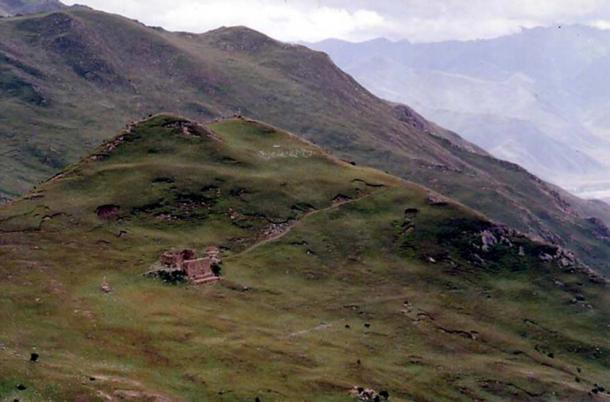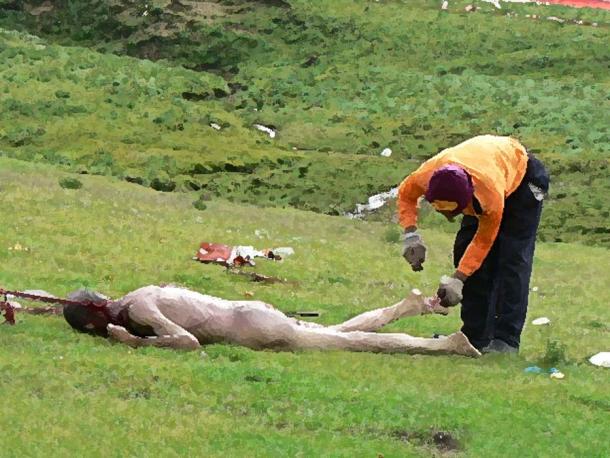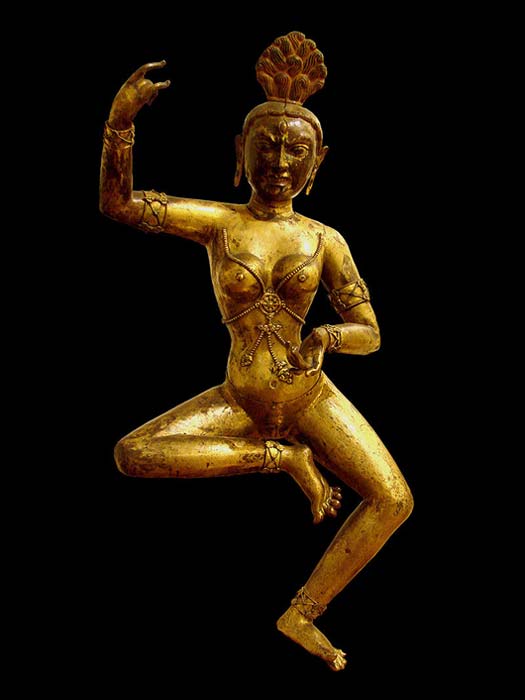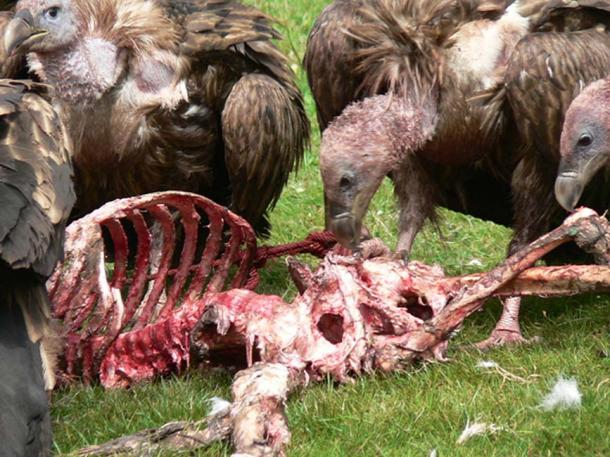
Sky Burial: Tibet’s Ancient Tradition for Honoring the Dead
The tradition of Sky burials, which is also known by the name of ‘Celestial burial’, is particularly associated with the Tibetan culture, although it has existed in other civilizations throughout history. It might sound like an alarming concept for people living in our current society but its values and philosophy are surprisingly beautiful and virtuous. Choosing a humble path and honoring nature by feeding their local vultures, some people from the Tibetan culture have preferred to be given a Sky burial ceremony to terminate the existence of their physical bodies. The Tibetans believe that there is a great honor in knowing that the body will go back to nature, and nourish some of nature’s creatures, in this case, the bearded vultures or 'Dakinis' (meaning 'sky dancers'), which is the Tibetan equivalent of angels.
A sky burial is the act of leaving a corpse, cut into precise pieces by a Burial Master, exposed to the elements of nature. This Master would also be in charge of smashing and grinding the bones of the deceased body, and then leaving the prepared corpse out in their selected open site. This was their way of offering a final honorable service to their material body; sending it back to the earth, and serving as an offering of a meal to the vultures.
This form of burial often takes place at high elevation locations since the vultures are the desired creature to be fed. In addition, the physical location plays an important part in this selection of burial since there would be very little ground space that could be used as cemetery, and the ground would often be frozen, making it difficult to dig. This has therefore been the most common way of disposing dead bodies in Tibet.

A sky burial site in Yerpa Valley, Tibet (CC BY-SA 3.0)
The Tibetan Belief
According to Tibetan beliefs regarding burials and death, which is based on the Buddhist belief of reincarnation and transmigration, the soul leaves the body at the moment of death. The Sky burial represents an act of compassion, feeding the dead body which no longer has a function, to the sacred vultures as a final act of charity.
Tibetan people are not afraid of death because it is viewed as a transformation and not an ending, and, therefore, Tibetans face the idea of death with serenity and calmness. They believe that in order to have a smooth transmigration a person should leave no trace of their earthly existence, which includes their physical body.
- Ancient Burials Suggestive of Blood Feuds
- Archaeologist pieces together story of the mysterious Zhang Zhung people of Tibet
- The Ancient Tibetan Monastery of Rinchenling Gompa
It is a sign of bad luck, or of one’s sins, if the vultures do not devour the offered corpse because it means that it is too dirty to be eaten. The other explanation for such outcome is that the family of the deceased did not perform all the required religious funerary rites. In those cases, other animals, such as wild dogs, would be brought to eat the corpse.

Vultures feeding on the rock used to expose bodies at a sky burial outside Lhasa, Tibet (CC BY-SA 3.0)
The Process and Preparation of the Body
When a person dies, their bodies are wrapped in white cloth and placed in a corner of the house for a period of three to five days. During this time monks or lamas read scriptures aloud so that the soul can be released from purgatory. The home environment is supposed to be kept peaceful to allow a smooth passing and ascension of the soul to the heavens. All family members discontinue any other activities in order to take care with this process. When the prayer period is over, the family members pick a day for the corpse to be taken to the Sky burial site.

A body being prepared for Sky burial in Sichuan. (CC BY-SA 3.0)
According to Pamela Logan, “Tibetans believe that, more important than the body, is the spirit of the deceased. Following death, the body should not be touched for three days, except possibly at the crown of the head, through which the consciousness, or namshe, exits. Lamas guide the spirit in a series of prayers that last for seven weeks, as the person makes their way through the bardo--intermediate states that precede rebirth”.
- How Breeding with an Ancient Human Species gave Tibetans their Head for Heights
- The practices and rituals of Tibetan Kapala skull caps
- Archaeologists announce Qiang people had vertically oriented teeth and longer skeletons

Dakini, the one who takes the soul to heaven. 18th century (Public Domain)
The Dakinis supposedly take the soul to the heavens, to a windy location, where the soul waits for its next reincarnation. Besides holding the belief of generosity towards feeding these sacred birds, Tibetans also say that this choice of disposing of the body honors and spares the life of other animals which would have been eaten by the vultures.

Skeletal remains as vultures feed. (Public Domain)
Although sky burials are believed to have existed for over 11,000 years, as evidence from excavations at Göbekli Tepe in Southern Turkey indicates, Dan Martin believes that we lack accurate records to validate such arguments. Regarding the practice of sky burials in Tibet, there is very little evidence to determine when it began. The earliest source which we currently have is an inaccurate account, dating from the 14th century, from a European traveler named Friar Odoric (1286-1331).
“Because of the nature of the practice, archaeological finds are probably incapable of providing evidence. Early Tibetan works from the Imperial Period and the period from 1000 to 1500 CE have, so far as we have been able to discover, nothing to say on the practice, since they only describe the interments of saints and kings, not of common people. It is entirely possible that more research, especially in Tibetan language sources, will reveal a much earlier verifiable date for the custom”, Dan Martin explains.
Top image: Sky burial in Tibet. Photo Source: (CC BY-SA 3.0)
By Marina Sohma
References:
Dan Martin, ’On The Cultural Ecology of Sky Burials on the Himalayan Plateau’ (1996) http://jstor.org/stable/29757283 (accessed Nov 10, 2016)
Jeffrey Hays, ’Tibetan Funerals, Sky Burials and Views on death’, http://factsanddetails.com/china/cat6/sub34/item210.html (accessed Nov 11, 2016)
Kham Sang, ‘Sky Burial in Tibet and Tibetan Funeral Customs’ (2016), Tibet Vista, http://www.tibettravel.org/tibetan-local-customs/tibetan-funeral.html (accessed Nov 10, 2016)
Pamela Logan, ’Witness to a Tibetan Sky-Burial, A Field Report for the China Exploration and Research Society, Drigugn, Tibet’(1997), alumnus.caltech.edu (accessed Nov 12, 2016)
Seth Faison, ‘Lirong Journal; Tibetans, and Vultures, Keep Ancient Burial Rite’ (1999), The New York Times, http://www.nytimes.com/1999/07/03/world/lirong-journal-tibetans-and-vultures-keep-ancient-burial-rite.html (accessed Nov 10, 2016)
















Comments
Please unsubscribe me from the notifications.
Thank you